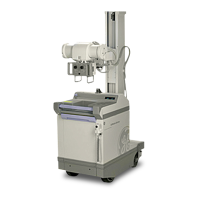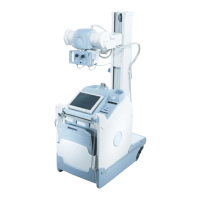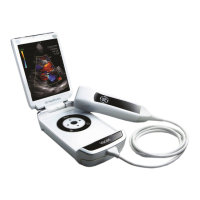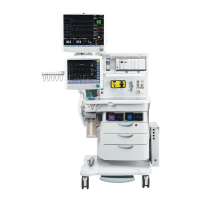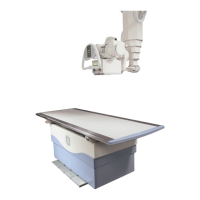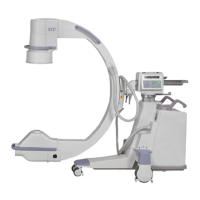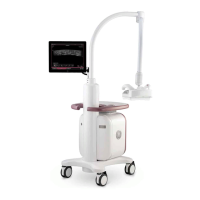
Do you have a question about the GE AMX-II and is the answer not in the manual?
| Brand | GE |
|---|---|
| Model | AMX-II |
| Category | Medical Equipment |
| Language | English |
Service manual for AMX-II X-Ray Unit, Revision 3-1684.
Procedures for reporting and claiming damages during shipment.
Crucial safety instructions and responsibilities for X-ray equipment use.
Introduction to the AMX-II X-Ray Unit and its operation.
Guidelines for protecting against radiation during operation.
Recommendations for safe and effective operation of the AMX-II.
Hazards and precautions related to the unit's battery.
Explanation of the unit's functional description and controls.
Step-by-step instructions for driving the mobile unit.
Procedures for positioning the unit and preparing for an exposure.
Procedure for recharging the unit's battery.
Actions for prolonged exposure indicators or audible signals.
Maximum ratings and duty cycles for the X-ray generator.
Deviation of MAS and KVP readings from selected values.
Federal regulations and inherent filtration of the tube unit.
Requirements for establishing a periodic maintenance program.
Guidelines for cleaning and handling power interruptions.
Preliminary steps before installing the unit.
Procedures related to the unit's battery.
Components required to meet HEW beam quality regulations.
General safety precautions for installation and maintenance.
Warnings about electrical shock and caustic electrolyte from batteries.
List of specialized tools and materials needed for service.
Steps for installing the vertical column of the unit.
Procedures for attaching the telescoping arm to the carriage.
Carefully placing the tube unit into the trunnion halves.
Adjusting the counterbalance for proper arm and tube support.
Steps for installing the high voltage cables.
Connecting stator and collimator cables.
Procedure for checking and adjusting the transformer oil level.
Wiring the HV transformer terminals according to lead labels.
Routing and connecting the stator cable.
Connecting the collimator cable to the 8TS1 terminal strip.
Step-by-step guide for making proper HV cable connections.
Safety precautions and preparation before battery installation.
Safety warnings regarding metal objects and sparks near batteries.
Monitoring battery voltage and current during initial charging.
Steps for completing the charge and setting the cutoff.
Procedure for replacing a faulty cell group.
Table outlining periodic maintenance and checks with frequencies.
Table listing functional checks and their recommended frequencies.
How to check and adjust electrolyte levels in battery cells.
Hazards of battery electrolyte and first aid.
Sliding cell groups into the compartment and connecting them.
Field tests required for HEW compliance.
Procedures for testing and adjusting various unit functions.
Table listing HEW field tests, requirements, and application.
Procedure for calibrating the battery condition meter.
Verifying the X-ray tube filament continuity.
Checking anode rotation and coasting time.
Procedure for adjusting the X-ray tube current (MA).
Performing functional checks on the timer.
Verifying HV transformer primary voltages and battery voltage under load.
Checking and adjusting the motor drive speed control.
Verifying wheel RPM and motor voltage against table values.
Preparing the collimator for attachment.
Removing interface plate, adapter plate, and finger guard.
Securing the collimator to the interface plate.
Recommended X-ray techniques for proper alignment procedures.
Adjusting the column nut to balance the telescoping arm.
Attaching a metric scale label.
Adjusting the field light timer for different intervals.
Checking and adjusting the collimator crosshair position.
Checking and adjusting the Bucky centering light.
Aligning the extension cylinder in the collimator tracks.
Verifying the collimator's field size accuracy.
Measuring the voltage of the collimator field lamp.
Misalignment limits for light and X-ray fields based on SID.
Test for half-value layer of the useful beam at 80 KVP.
Demonstrating and explaining unit functions to the user.
Providing operating manual, warranty form, and other documents.
Steps for installing the X-ray tube unit.
Procedures for installing the collimator.
Verifying the accuracy of X-ray KVP and MAS settings.
Checking and adjusting the motor drive system.
Procedures for charging the unit's battery.
Verifying the battery's capacity.
Final steps to complete the unit installation.
Identifying panels and their corresponding component prefixes.
Identifying AMX-II components and HEW certification requirements.
Precautions for electrical shock, battery hazards, and hazardous areas.
Information on unit assembly and transport warnings.
Details on furnished parts and battery prep before installation.
Specialized test equipment needed for installation and troubleshooting.
Table listing HEW field tests, requirements, and application.
Warning about releasing tie-down straps and vertical lock prematurely.
Procedures for handling and reporting shipping damages.
Inspecting the tube unit for oil leaks or broken inserts.
Disassembling fork trunnions and removing screws.
Installing left and right trunnions with washers.
Warning about the vertical column's counterbalance.
Releasing and extending the telescoping arm.
Steps for removing the cassette drawer and kick panel.
Reviewing safety precautions before battery installation.
Connecting battery packs using No. 6 AWG leads.
Checking the HV transformer for oil leaks.
Calibrating the battery condition meter.
Verifying filament glow and anode rotation.
Verifying Ready lamp behavior after rotor button press.
Securing the collimator to the interface plate.
Attaching a metric scale label.
Adjusting the field light timer for different intervals.
Ensuring cable is in guide and adjusting counterbalance force.
Using a torpedo level to check arm balance.
Connecting HV cables to the HV divider and tube unit.
Procedure for adjusting the MA stabilizer.
Checking and adjusting the timer for correct exposure intervals.
Performing checks on the back-up timer.
Measuring battery voltage drop under load conditions.
Performing exposures and measuring KVP, comparing to waveform.
Checking and adjusting the collimator crosshair position.
Checking the alignment of the extension cylinder.
Checking the field size accuracy of the collimator.
Measuring the voltage of the collimator field lamp.
Misalignment limits for light and X-ray fields based on SID.
Test for half-value layer of the useful beam at 80 KVP.
Checking motor drive controls and safety interlocks.
Charging the battery and checking the cutoff setting.
Testing battery capacity by taking exposures.
Demonstrating and explaining unit functions to the user.
Submitting installation job sheets and product locator cards.
HEW field tests for compliance, references, and data recording.
Tests for KVP accuracy at different settings.
Tests for collimator light and X-ray field alignment.
Checking tube unit and collimator rotation.
Checking the extension arm assembly.
Checking column and vertical carriage assembly.
Checking base, cabinet, and brakes.
Checking motor drive controls and safety interlocks.
Calibrating the battery circuit.
Checking the tube unit's rotation.
Measuring MA and filament primary voltage.
Checking MAS (time) and overload conditions.
Checking H.V. divider for KVP calibration and MA.
Connecting HV divider and scope for measurements.
Checking the collimator's field light.
Checking and adjusting the collimator crosshair position.
Checking the alignment of the extension cylinder.
Performing alignment checks on the collimator.
Performing system checks.
Checking film and indicator lights.
How to check and adjust electrolyte levels in battery cells.
Testing battery capacity by taking exposures.
Overall functional description of the AMX-II.
Theory and service for the battery charger.
Description of the AMX-II as a battery-powered X-ray unit.
Description of the inverter driver's role and components.
Description of the 60 Hz inverter driver output coupler.
Description of the 500 Hz inverter driver circuit and its components.
Explaining the principle of operation for both 60 Hz and 500 Hz inverters.
Requirements for filament voltage and ma regulator adjustments.
Sequence of events leading to the READY state.
Sequence of events to produce an exposure.
How the radiographic timer terminates exposure via forced commutation.
How MA overload trips the main power circuit breaker.
How releasing handswitch buttons terminates exposure.
How the collimator lamp circuit is initiated.
How operator controls motor speed via potentiometer and sawtooth voltage.
Introduction to oscilloscope waveforms for analysis.
Waveforms showing trigger signals to the 60-Hz inverter driver.
Waveforms of the 60-Hz inverter driver output.
Waveforms showing voltage proportional to current in stator winding.
Signal indicating 3A2V5 actuation for exposure start interlock.
Signal indicating current in 7T2 filament transformer primary.
Signal at gate of 2CR2 for exposure turn-on.
Signal at gate of 2CR1 for exposure turn-off.
Trigger signals from UJT oscillator to 500-Hz inverter driver.
Signals from pilot SCRs to the inverter driver SCRs.
Voltage proportional to base current of 3A3Q19 and 3A3Q20.
Output signal from 3A3Q55.
Gate trigger voltages for 500-Hz inverter SCRs.
Waveforms of high voltage transformer primary voltages.
Power supply waveform for the X-ray ON light circuit.
Voltage at the base of 3A2Q46 before and during exposure.
Signal indicating 3A2V5 actuation for exposure start interlock.
Signal proportional to MA in HV transformer secondary.
Signal voltage proportional to MA for MA regulator.
Typical balance adjustment voltages for 3A2Q60 and 3A2Q63.
Signal indicating 500-Hz inverter function and shut off capacitor status.
Warning about reversing scope connections to prevent exposure failure.
Exposure stop signal to turn off SCR gate.
Adjusting the interval timer for different MAS selections.
KVP measurement across the X-ray tube.
Sawtooth waveform from UJT oscillator for 1K Hz inverter driver.
Output waveform of emitter follower 8A1-03.
Output of Q5 at low and maximum speeds.
Output of 8A1-06 at low and high speed.
Output of 8A1-09 during run conditions.
Waveform showing overload protection circuit during normal operation.
Table identifying panels and their prefixes.
Chart detailing relay functions and their locations.
Identifying panels and their corresponding component prefixes.
Table detailing relay information: coil, name, contact, function, and location.
Diagram showing the contacts for relay 8K1.
Schematic of the meter board showing components and connections.
Schematic of the 60 Hz inverter driver circuit.
Schematic for X-ray tube stator power.
Schematic for X-ray tube filament power.
Schematic for the collimator light circuit.
Schematic of the inverter ON-OFF switches circuit.
Schematic of trigger and regulation circuits.
Adjustment procedure for the MA regulator.
Schematic of the HV rectifier and X-ray tube unit.
Continued schematic details of trigger and regulation circuits.
Procedures for adjusting the time selector.
Continued schematic details of trigger and regulation circuits.
Procedures for adjusting the time selector and MAS.
